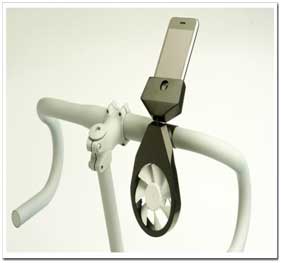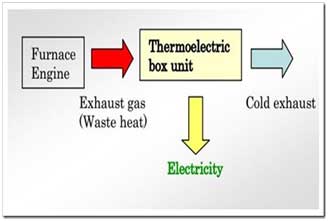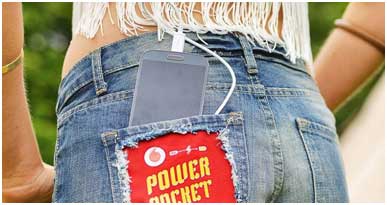 By Dr. S. S. Verma, Department of Physics, S.L.I.E.T.
By Dr. S. S. Verma, Department of Physics, S.L.I.E.T.
Mobile phone in its various varieties has become an integral part of civilization crossing all boundaries of economical status, caste, religion and region. We all know our cell phones are so much more than just a way to keep in touch. Many of us use our phones as a flash light, a camera and even a GPS device. These days, cell phones are also considered an important means of letting others know we’re safe. Having a fully charged phone is a responsible measure of being prepared for unforeseen events. We feel comfortable to have options like anytime and anywhere for its (mobile phone) charging. Problem arise
in case we are not having access to electricity (in its conventional form) due to any reasons (e.g., rain, storm, short-circuit etc.) leading towards power break down. Whether it’s an electrical issue or inclement weather, a power outage can leave us feeling helpless. As more we integrate the use of mobile phones in our daily lives we feel that their battery lasts for long. In that case we feel to have a power source small enough to be used to charge our technological tool of life i.e. mobile. In this article some unconventional, unorthodox ways, alternative options towards charging of mobile without the use of conventional electricity are highlighted which may be considered to be infancy at the moment but will emerge as possible options/alternatives in future.
Wind farms are an excellent alternate source of power, which is gaining traction all over the world. In order to make use of winds or breath to be used to charge a mobile phone, Tjeerd Veenhoven from The Netherlands had created iFan, which uses wind power to charge up an iPhone. Using the computer fan which is found in every desktop and laptop, he has designed a system wherein iPhone can be charged within 5 hours. The condition is that the device should be able to get winds in order to get the power generated. One suggestion is to tie up the device on a bicycle or a car. As the vehicle moves, wind would be directly available to the device and mobile can keep on charging.
Another method uses a fan for the smartphone and allows to charge the battery using wind energy. To charge the phone, just place it into an iFan charging case on the handlebars of any bicycle and ride for six hours. After six hours, we’ll have generated enough electricity to have fully charged the phone. Similarly, about breath-powered mobile phone, the concept design was created by Joao Paulo Lammoglia that utilizes the power of breath to convert into electricity via small wind turbines. The user simply wears the AIRE mask hooked up to an iOS device, and by breathing into the mask, the gadget is able to recharge the phone. AIRE mask can be used in any situation, indoors or outdoors.
Using solar energy
One of the most sustainable ways to charge our mobile is reusing the energy from the Sun. For this there are several systems, but one of the most used are backpacks incorporating small solar panels. Recently, the Spanish company Textil Energy just launched a pioneering invention that we expect to see in coastal terraces next summer. This is one of the first solar laminates, designed to be integrated in umbrellas and parasols, which is charged with energy from the Sun and distributes electricity through three USB outputs. Always remember that chargers which rely on solar power need to be charged during clear weather. Solar-powered battery chargers are portable devices that use energy from the sun to give your phone life. According to experts, a small solar device can recharge a tablet or phone in approximately two or three hours if the weather is sunny. It’s also possible to have them ready to go in advance as they often come with a built-in battery that will hold the charge once you take them out of the sun. Because many incidents of the power going out are due to bad weather, the sun may not always be an option.
A Japanese innovation firm has created a pan charger which can use heat to produce enough energy to charge a phone. The Pan Charger, is made up of base which contains strips of ceramic thermoelectric material. The temperature differentials and the 100 degree C water inside the pan allow the device to create power, which can be extracted using a USB device. This method would be a sure shot hit among Indian ladies when it is finally launched. Any device which can operate on 2W/400mA
can be charged on this pan. In fact, it is estimated that an iPhone can be charged within 5 hours. Similarly, a camping stove with a built in USB port can also be used to charge a mobile phone making use of heat energy. Some of these handy little devices can cook our food and also provide a charge to electronics at the same time. The heat created by the fire recharges the device’s battery as it cooks, providing consistently usable power to any device with a USB cord.
Power of pee
Researchers from England’s University of Bristol and Bristol Robotics Laboratory are right now researching ways to convert urine into a power source. The whole concept is based on Microbial Fuel Cells (MFCs), which can create an alternate source of power when urine flows through them. When microbes encounter urine, they consume them as part of their metabolic process. As soon as microbes consume the urine, they release electrons which are captured by an electrode connected with the MFCs. Soon the circuit is completed and electricity is produced. Once this project is successful it can be really easy to charge a smartphone.
Energy produced by shouting and to be used to charge a phone. Researchers at South Korea’s Sungkyunkwan University are actually conducting research into this source of power. Scientists have placed two electrodes which are connected by minute nano-strands of zinc oxide. When a human being shouts, then the vibrations caused by the sound are absorbed by these nano-strands which produces energy. In fact, other background noises such as traffic noise etc can also be used to generate this energy. The first prototype is able to generate 50 mV of electricity from the sounds of 100 dB. This is the equivalent to the noise
generated by heavy traffic, an airplane flying overhead or the angry screams of someone with a dying smartphone. But there are several problems with this theory; for example, a prototype device needs atleast 100 decibels, which is the equivalent of noisy traffic or a jet passing overhead — to generate 50 millivolts of electricity. Such small energy can no doubt help the battery of a smartphone but cannot charge it fully. A typical battery needs 5 to 10 volts to get charged up. In the future, this device will allow electricity to be generated more efficiently and, who knows, we may someday live in a world where shouting at phone may actually help to charge it.
Charging with fruits and vegetables
Certain fruits and vegetables are rich sources of vitamin C, but these rich sources (citrus fruits, strawberries, green peppers, white potatoes) are spread over many fruit and vegetable categories. Other fruits and vegetables, including avocado, corn, potatoes, and dried beans, are rich in starch, whereas sweet potatoes are mostly sucrose, not starch. It is amazing that we can charge our phone with apples and potatoes. By stringing 800 pieces of fruit and vegetables together with galvanized nails and wire, artist Caleb Charland was able to scale-up the power output so much that it could charge a mobile phone – in this case a Nokia Lumia 930, charged via a wireless mat. The hand-built circuit created an electrical current of an average 20mA and around six volts, so enough to charge a phone.
Soft-drink power
Carbonated drinks are full of sugar and fat and a Chinese designer has come up with a tremendous idea to charge a mobile phone (using Bio-batteries) with Soft-drinks. Instead of drinking, the phone user needs to pour soft drinks in a special cell which transforms the energy released by soda, sugar and carbons to create electric charge which can easily charge a phone. The designer came up with a way to use soft drink to power a Nokia phone, provided the device was modified to include a chemical board capable of converting carbohydrates and sugar into energy.
Charging with SWEAT
When our phone battery is running low, we can charge it using our body sweat. In general, the more intense the exercise, the more lactate the body produces.
During strenuous physical activity, the body needs to generate more energy, so it activates a process called glycolysis. Glycolysis produces energy and lactate, the latter of which scientists can detect in the blood. Professional athletes monitor their lactate levels during performance testing as a way to evaluate their fitness and training program. In addition, doctors measure lactate during exercise testing of patients for conditions marked by abnormally high lactate levels, such as heart or lung disease. Researchers have developed a small temporary tattoo that strips electrons from lactate produced by our bodies during perspiration. At the moment, the energy it harnesses is just enough to charge a small biobattery, but the team are working on ways to use the technology to charge smartphones and tablets. The device works by detecting and responding to lactate, which is naturally present in sweat.
Vodafone researchers have developed the PocketPower making use of body heat to generate electricity. It’s a pair of denim shorts that, in eight hours, is able to recharge a smartphone enough to make 24 minutes of calls. This is all based on the assumption that the shorts are able to reach a temperature of 37 degrees.
Power from car: Since batteries do not use electricity to power objects, they are available to use during an outage. This includes car battery. On the road during a power outage, using own car to charge the phone is a no-brainer. Get a car charge that suits the handset. The interiors of newer vehicles usually have specific charging ports for phones and computers, while older vehicles often have a cigarette lighter that electronics can plug into.
Computer as a power source: When the power goes out, sometimes having a smartphone is a greater priority than a laptop, as it can both connect to the internet and make emergency calls. In these situations, we can take the power from the laptop and use it to charge the phone. Most laptop/computer batteries have a good amount of energy left if they’ve been plugged in or charging for most of the day. For recharging a mobile in case of no-electricity, we can smply plug the phone into the USB port of laptop or computer. Some handsets charge even faster if we switch the phone to ‘flight mode’ while charging.
New sponge battery: An Israeli company called StoreDot has developed technology that can charge a mobile phone in a few seconds and an electric car in minutes. This is done by using nano-technology to synthesize artificial molecules, which can also store a much higher charge more quickly, in effect acting like a super-dense sponge to soak up power and retain it. Researchers discovered naturally occurring crystals two nanometers in diameter that show interesting properties. The crystals, short chains of amino acids called peptides, can store a charge or emit light, are easy and cheap to make, and are non-toxic, the company claims. The firm is working on using the crystals, which it calls NanoDots, for displays and semiconductors as well as batteries.
With a crank case: We can use the crank case which allows to recharge the smartphone with nothing more than the strength of our own wrist. The device, the BoostTurbine 4000, has LED charge indicators to show how much battery life we have and guarantees enough battery life to make a one minute call or send some messages after cranking for a little under four minutes. Among so much technology it might seem a very rudimentary solution, but is an effective mechanism, especially if we are in remote places with difficult access to electricity. To use it simply turning a crank attached to a small dynamo which in turn is connected to a battery.
Charging with Yo-Yo: This childhood toy has never really had much of a point as it goes up, goes down, sometimes it pretends it’s a dog being walked but a few years ago, a Swedish designer, Peter Thuvander, came up with a way to finally give the yo-yo some real purpose in life: charging a phone. The idea was simple: playing with the yo-yo charges a small battery inside; afterward, just plug in the device via USB and power up.
Conclusion
We hope that some of these methods are actually adapted and mass-produced so that our dependence on electricity is lessened, and we have ample options to charge a mobile even if we are left stranded on an island.










